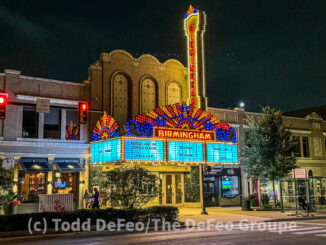First, he was “Born to Run,” then he was “Born in the U.S.A.,” but the whole time, he was “The Boss.”
Rock legend Bruce Springsteen and the reunited E Street Band will bring their three-hour concert extravaganza to the Schottenstein Center this Wednesday (Nov. 17).
Throughout his illustrious, nearly 30-year career, Springsteen has performed for millions of fans around the world.
However, success did not come easily for Springsteen. After two commercially unsuccessfully albums, Springsteen had his back against the wall in 1975 to produce a highly marketable album or face the harsh reality of losing his record contract.
The result was, perhaps, his greatest album, “Born to Run.” The title track was an anthem for his generation.
However, the success was bittersweet for “The Boss.” Shortly after the release of “Born to Run,” Springsteen became entangled in a legal battle over the rights to his songs.
After a two-year case, a settlement was reached and Springsteen recorded and released his fourth album.
With the release of Darkness on the Edge of Town in 1978, the lineup for the E Street Band had been set: Roy Bittan on keyboards, Clarence Clemons on sax, Danny Federici on keyboards, Gary Tallent on bass, Little Steven (Van Zandt) on guitars, and Max Weinberg on drums.
1980 saw the group record a double album, The River, and a highly successful world tour.
In 1982, Springsteen took a chance by recording a solo acoustic album, Nebraska. The album paid homage to two of Springsteen’s influences: Bob Dylan and Woody Guthrie.
The follow-up to Nebraska would put Bruce Springsteen and The E Street Band in the history books forever. In 1984, “Born in the U.S.A.” was released and immediately became one of the most commercially successful songs of all time. The album contained numerous top ten singles, including a number two hit, “Dancing in the Dark.”
The title track was the voice of the post-Vietnam generation. It was so popular that presidential candidate Ronald Reagan attempted to use the song as his campaign song, much to the dismay of Springsteen.
At the height of his success, Springsteen released a five-LP box set of live material. Live 1975-1985, recorded during his previous ten years of touring.
Following his greatest commercial success ever, Springsteen turned inwards to record another solo album, “Tunnel of Love.” The album did, however, feature many members of the E Street Band, though not performing as a single entity.
1988 saw the group backing Springsteen on a world tour and an Amnesty International tour the following year.
Later in 1989, Springsteen made a move that shocked the music world: he disbanded the E Street Band. The band had completed 10-plus solid years of service performing for millions of fans around the world.
Despite a breakup that would seem detrimental to the future of his career, Springsteen went on to finish three albums without the backing of the E Street band and recorded the most successful song of his career, “Streets of Philadelphia.”
In 1995, the E Street Band was reunited for a brief time to record new tracks for Springsteen’s first-ever greatest hits compilation. The period saw a few live shows and many rumors as to the future of Springsteen and the E Street Band.
However, it was not until 1998 that the E Street Band officially reunited with Springsteen for a world tour.
In January 1999, Springsteen was inducted into the Rock and Roll Hall of Fame, the most prestigious honor for a rock musician.




